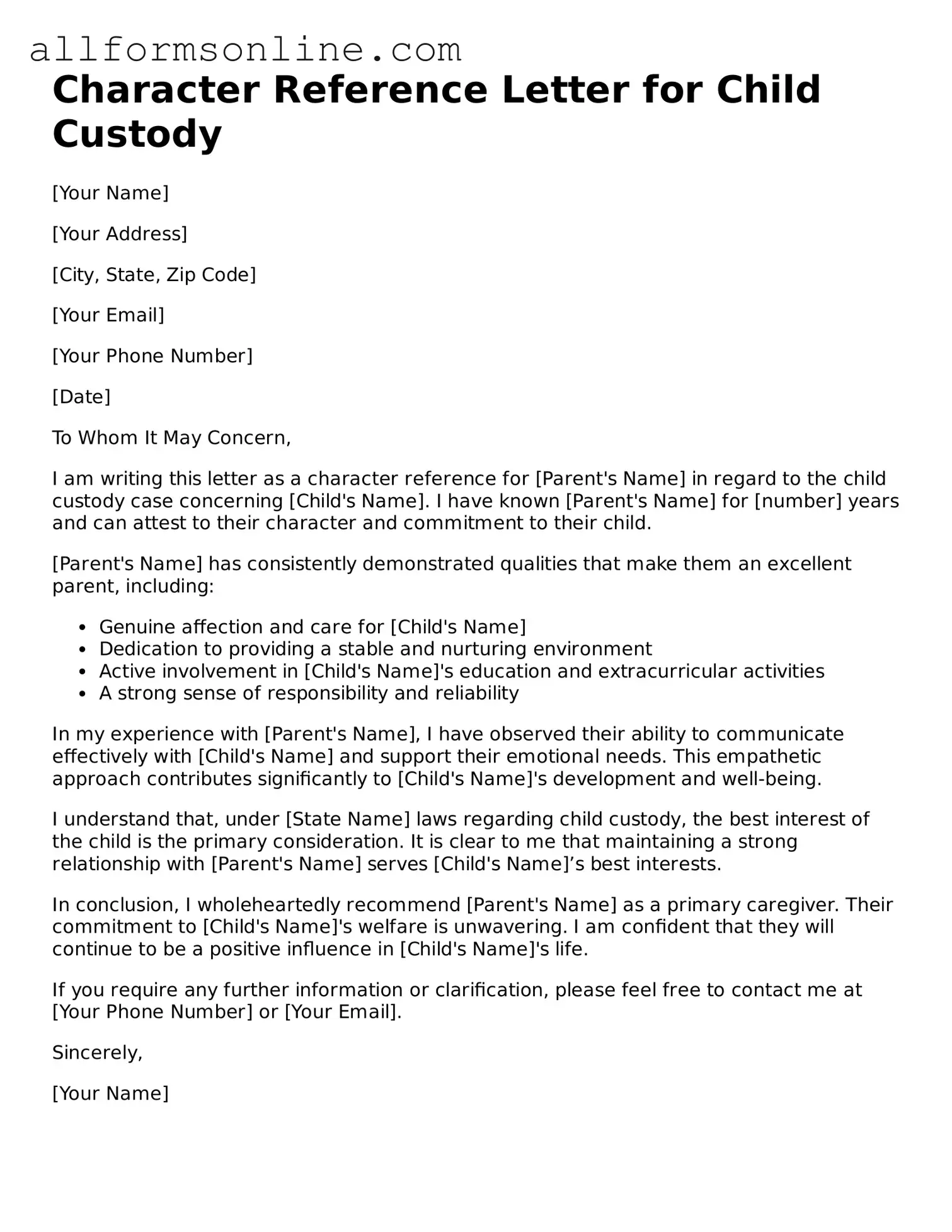What is a Character Reference Letter for Child Custody?
A Character Reference Letter for Child Custody is a written document that provides insight into a parent's character, parenting abilities, and overall suitability for custody. This letter is typically written by someone who knows the parent well, such as a family member, friend, teacher, or community member. The purpose of the letter is to support the parent's case in custody proceedings by highlighting their positive attributes and commitment to their child's well-being.
Who should write a Character Reference Letter?
Anyone who has a close relationship with the parent and can speak to their character and parenting skills can write a Character Reference Letter. This may include relatives, friends, teachers, or even colleagues. It is essential that the writer is credible and can provide specific examples of the parent's positive traits and behaviors. The more personal and detailed the letter, the more impactful it will be in court.
What should be included in the letter?
The letter should begin with a brief introduction of the writer, including their relationship to the parent. Following this, it should outline specific qualities that make the parent a suitable guardian, such as their nurturing nature, responsibility, and involvement in the child's life. Examples of positive interactions between the parent and child can strengthen the letter. Finally, the letter should conclude with a strong endorsement of the parent's ability to provide a loving and stable environment for the child.
How can a Character Reference Letter impact a custody case?
A well-written Character Reference Letter can significantly influence a custody case by providing the court with a more comprehensive understanding of the parent's character. It serves as additional evidence of the parent's commitment to their child's welfare. Judges often consider these letters when making custody decisions, as they can help illustrate the parent's strengths and the positive environment they can offer. Thus, a thoughtful letter can play a crucial role in supporting the parent's custody request.
